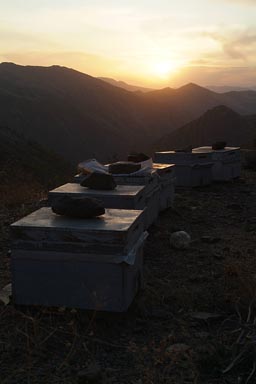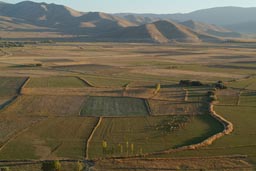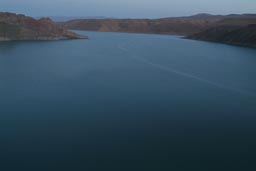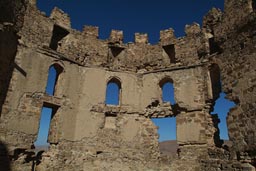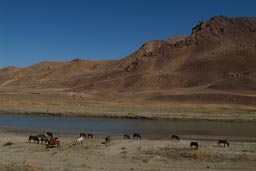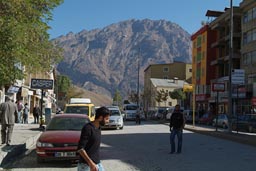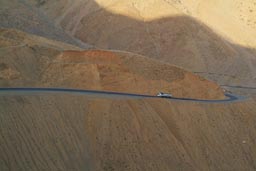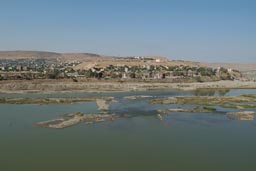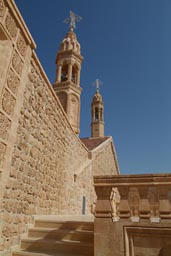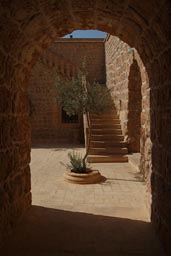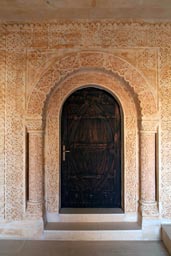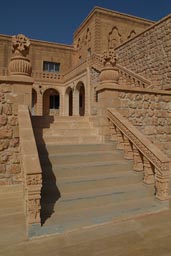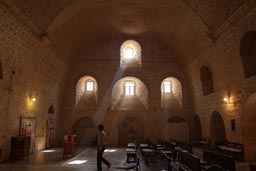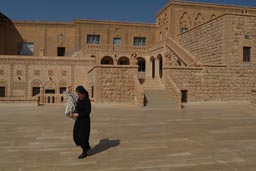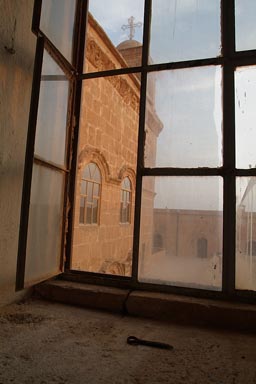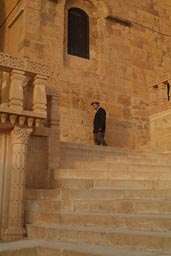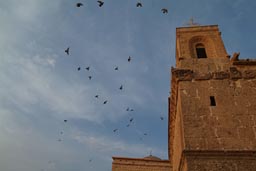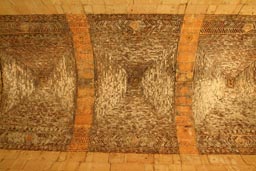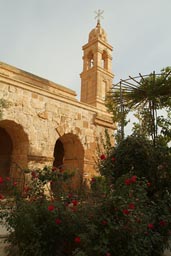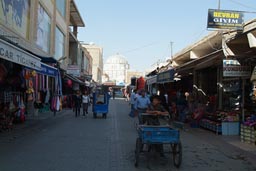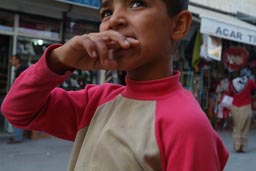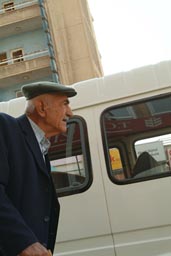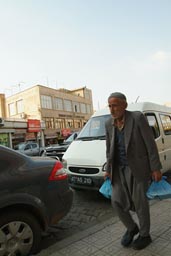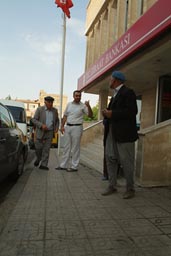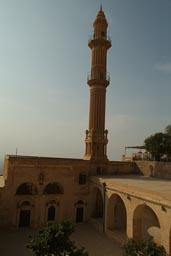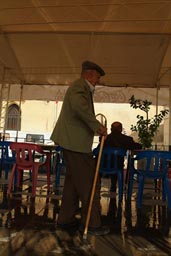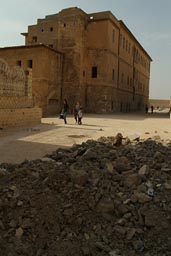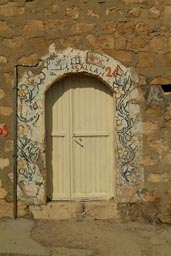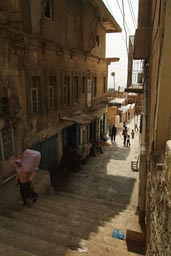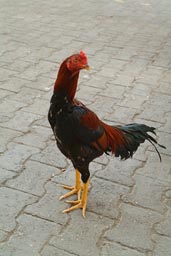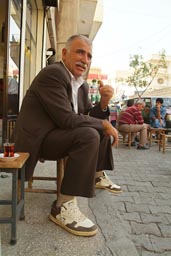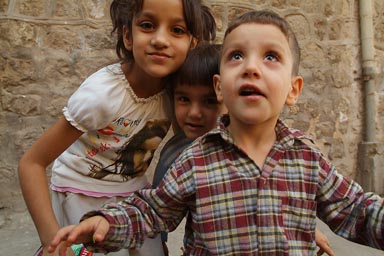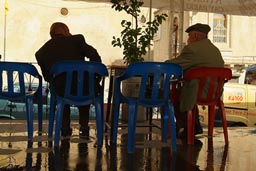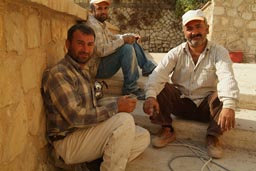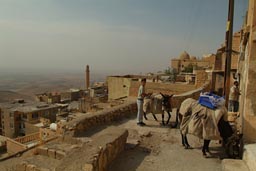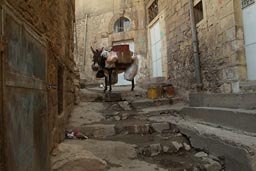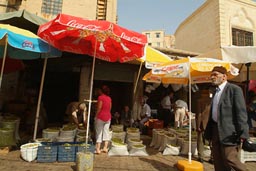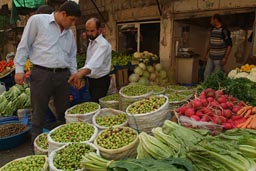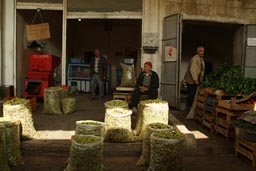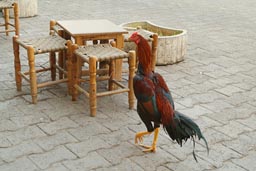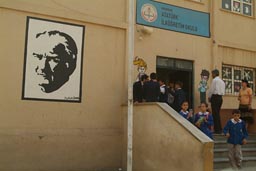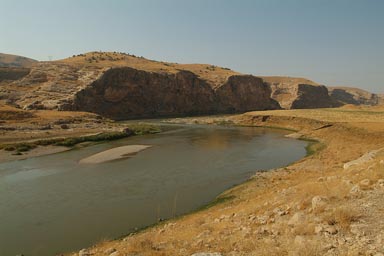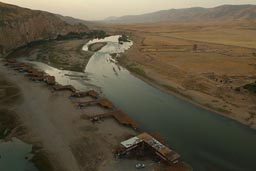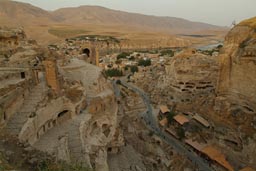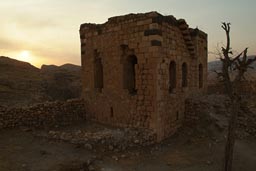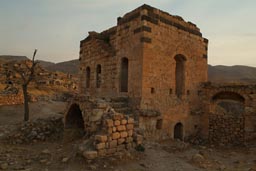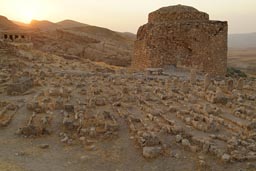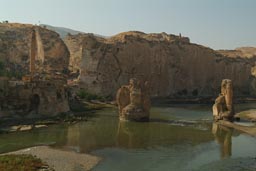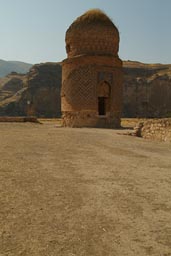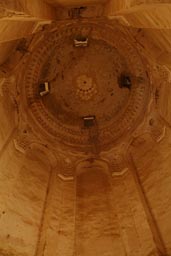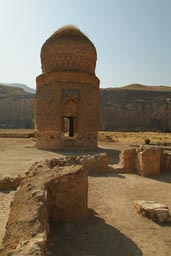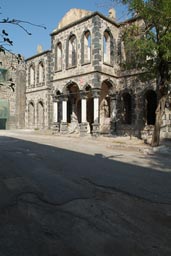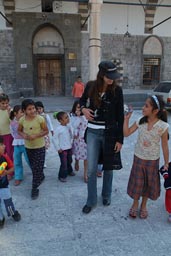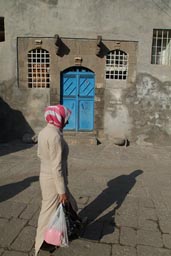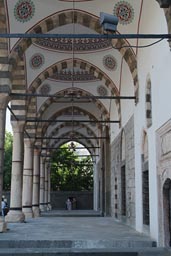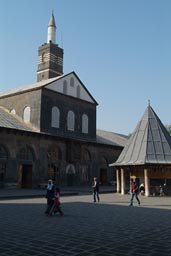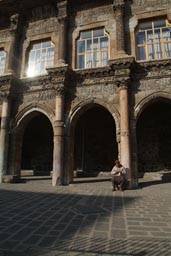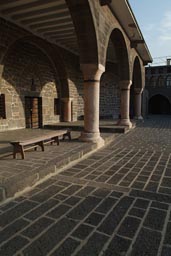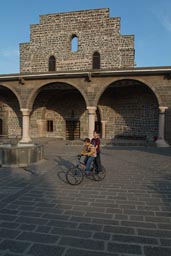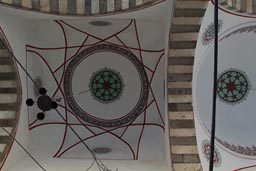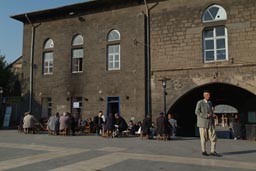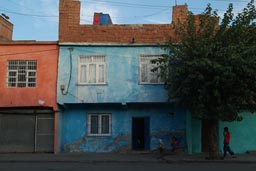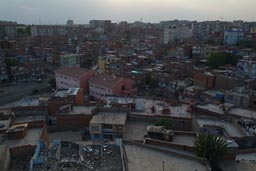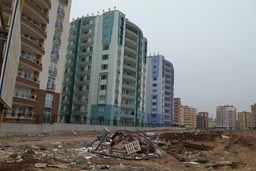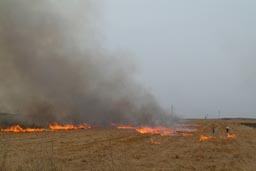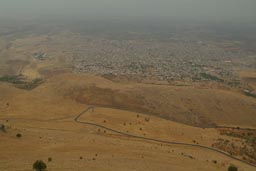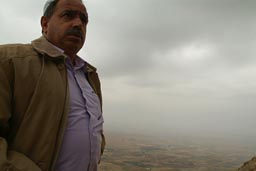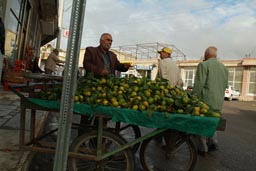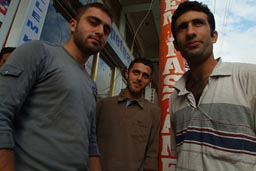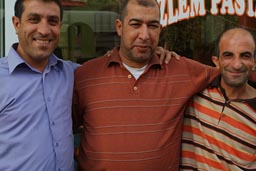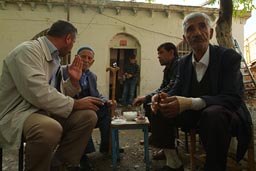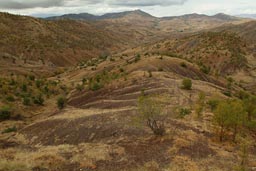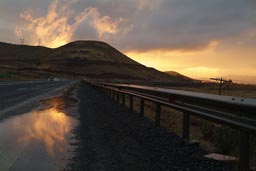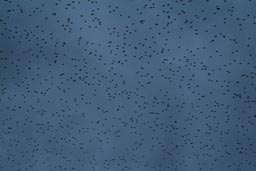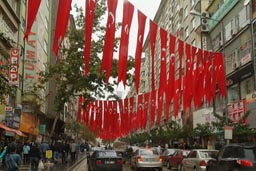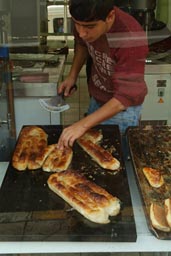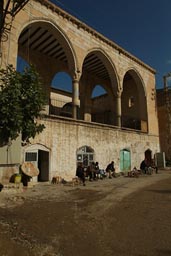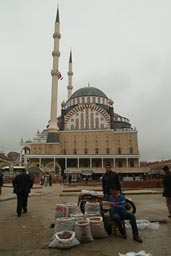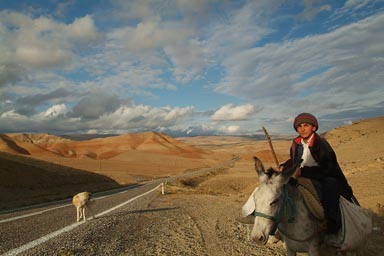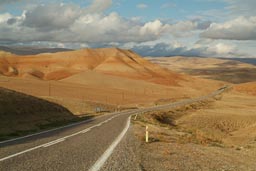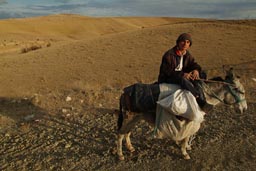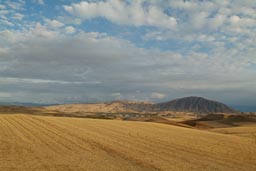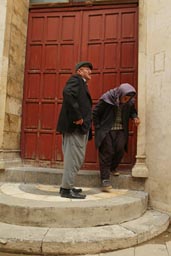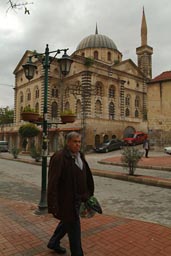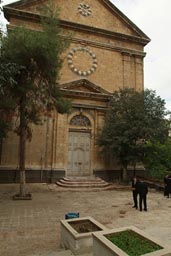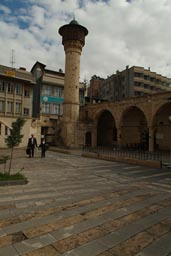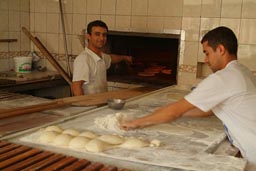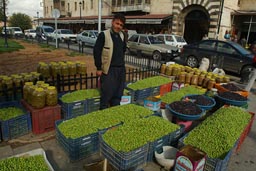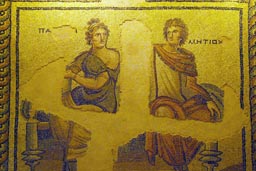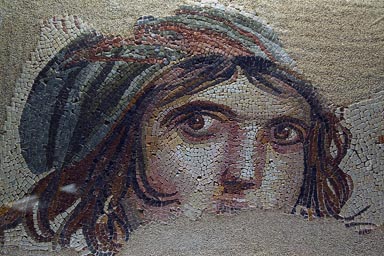www.thisfabtrek.com > journey > asia > turkey > 20091105-gaziantep
South-eastern Turkey.
Download GPS (KML) track/waypoints.
The Van experience tells me there will never be a Turkish Kurdistan. The Turks won’t give it up, not ever. What would the Kurds gain from independence anyway? Apart from independence obviously! All the differences in a society between Islam and western ideals would only break to the surface then. Independence anyway is not the goal of most Kurds that I have met, more respect, acknowledgement of culture and heritage is. 55% (wiki) of the worlds Kurds live in Turkey and the Turkish government has some way to go to serve this (2nd largest i.e. 18%) ethnicity. After 30 years of civil war, of terror and casualties on both sides (30,000) fighting has ground a bit to a stand-still; no wonder the land is heavily patrolled, militaries sit on every mountain range and make PKK (wiki) movements difficult. Is this the end of the war? Is there hope?
Christina and I are in Turkey’s east, and this country is such an interesting place, these mountains are so high and untouched, we go over a few more passes over 2,500m, Güzeldere Geçidi leads up to 2,730, it is bloody cold at night. This evening sheep are being driven in from the green pastures below the remains of Çavuştepe, city on a mountain ridge from way before Roman times, 2400 BC says wiki. Later a reservoir lake simmers in faint twilight and next morning Hoşap Kalesi, a Kurdish warlord castle shines in the early sun and reminds me of the crusaders fortresses on the Danube or Rhine. Shortly later again there is a pack of horses, they feed on the few straws between the pebbles of a mountain river, autumn light is clear.
I adore this country.
Eventually past Hakkari we roll down towards the Iraqi and later Syrian border. Road is winding, jandarma check points are plenty, up and down, sunset, later the lights of the military camps shine from every hill top. Some stone throwing teens some 2km from Iraqi border after we park for the night force us to relocate camp, so we drive on to Sirnak at 1400m, it is remarkably warmer. In the morning (21st Oct) curious men and women, on their way to work or school, all, really all greet a “hello”, some girls dare glance over while I sip my morning coffee. Some of the men wear those baggy trousers and turbans, but most wear suits, women usually no veils, western clothes prevail. Going through the villages in the Kurdish mountains we have seen those baggy trousers a lot, turbaned men, rifled, belonging to some militia, certainly pro Turkish.
There is a mosque on the edge of Sirnak where we start our drop down some 1000m to Cizre only 30kms away, gate to the Syrian desert, on the Tigris River. Suddenly all is different, most women black and completely covered, Cizre is dusty with too much road building, they’re quarrying away whole mountains as in so many parts in Turkey. The Tigris River is not such a beautiful sight here.
Aramaean Monasteries/Churches.
Along the Syrian border westwards the land is stony, to say the least. Stones, stones, rocks, fields of stones, some Bedouin tents, trashy villages, walls of stones and in between stones and more stones than anyone could use to build stony fences. Some thorn bushes, burnt grass and thistle. But then – slightly off the main road a monastery in between orchards of olive trees; maybe the only plant that can grow here.
We have entered what someone referred to as Aramaic country or upper Mesopotamia. And somehow the Syrian Christian church managed better than Greek, Georgian and Armenian. Their monasteries here are fully functional, restored with millions from Germany and elsewhere, Aramaean diaspora money. Mor Gabriel Monastery (wiki, founded 390 or so, Baptism of 540, catacombs of 15000 dead) is impressive.
In Mor Hananyo/Deyr ul-Zafaran (wiki) we listen to the prayer chants in the church. Just I am asking myself: Why is there such a fuss about a cross on top of (Armenian) Akhtamar Island (ex) church, now officially a museum (wiki, thisfabtrek) on Lake Van? When the Syriac Christians (wiki, Aramaic) can openly practice their religion?
In the village of Barıştepe we see just another Syriac Christian manastır, Mor Jacub (Today's Zaman); from 419 AD it served the oldest Aramaic community in Turkey till the events of WW1. Only recently it has been restored; huge monies are flowing in here building “palaces” for the new monks. The old church from 419 makes a thorough impression.
Time for lunch in Midyat, we actually have twice lunch in Midyat’s Cihan Lokantasi, such good food. If you ever get there, it is worth it. The salads are fresh and plenty, the food Turkish, steamed lamb, eggplant, saucy, any dish is a good dish, order and eat what you find behind the display window, fresh creamy Ayran to go with, tea to close off.
Mardin.
Mardin (wiki) is nice, laidback, relaxed, on a hill, between two mountain tops, small alleys, up/down, a market with fresh olives, nuts, tobacco, and all the usual fruit and veggie stuff, Turkish, Kurdish, Arab all at once, old men wear baggy trousers and French hats, all have their tea somewhere. What I deemed a mosque in front of which we park turns out to be a school with a yard, 7.30 next morning, it is not the muezzin that wakes us but every second of about 200 pupils. They just cannot resist and knock on the car, the curiosity of the young bursts out; they throw small pebbles to attract our attention, photo, photo.
Hasankeyf.
One site that does not receive much attention by government and abroad to the extent we can call it neglect is Hasankeyf (wiki, Middle East magazine) on the Tigris river, by some called Turkey’s most spectacular attraction, parts of it will soon be gone, be submerged by the Ilısu Dam project (part of the South Anatolian Project). Since 1800 BC, a town, a civilization, a citadel on top of a 150m cliff, a bridge over the Tigris, numerous mosques, before Christian churches, it must have been a town of 50,000 telling from the expanse of cave and stone housings that stretch over several hills. There is NO information on the site to be had. Such a huge complex, it should have had proper excavations carried out for decades, but it is in Kurdish territory, was in middle of civil war zone, sealed off; and soon it’ll be gone anyway. Such a lovely site… (The Inependent)
Not so strange then is the fact that my most useless guidebook I have ever bought, Cadogan Guides series does not even mention it. Well I knew it for a while, is really just fancy rubbish talk, no facts in there by couple authors Dana Facaros and Michael Pauls. Futilely Yours.
Diyarbakır/Diyarbakir.
First shower in Diyarbakır (wiki) in 3 weeks, a hotel, I realise I have gotten fat; food is simply too good in Turkey.
Diyarbakır is called capital of Kurdistan, it has been in the news the morning we arrive for giving an enthusiastic welcome to 34 Kurdish PKK fighters that just surrendered, following an offer by the AKP (religious party, wiki) government (“The call to come down from the mountains”). There is significant hope for peace in Diyarbakır.
I am nowhere near an expert on Turkish politics, but maybe the Erdogan (wiki) government does things right, different than many of the former (leftists and rightists). It does not really make sense geographically (isn't Anatolia called Minor Asia, I mean it is Asia), but on any other reasons Europe should accept the Turkish (EU) bid.
The Internet Café which I go on all days in old town Diyarbakır is professionally run by a 17 year old and his much younger friends, very chaotic, loud music, full all day, male only. In the 4 days each 5 hours not one woman shows up. Everybody is constantly being served tea, for free, I come to six teas on my first visit. But why male only?
Diyarbakır shows us first rain since very long. The weather seems has changed, finally. Still we see Ulu Chamii, grand mosque (Roman art lovers), old, built with Roman pillars and arches. Also we see the citadel, but bored male youngsters hang around, drink, smoke dope, with no illusions or ideals, smash in the new windows, destroy anything that looks renovated before it even is being put on to public display. Same sight and feel when we go round the city walls, Diyarbakır’s all pride, longest intact wall after the Great Chinese Wall.
Problem of Diyarbakır is that the city 10 to 15 years ago had 200,000 people, today close to 1 million, maybe more. It is the influx from the civil war torn regions around and displacement of country folk due to the many dam projects (Southeastern Anatolia Project, GAP, wiki). The bleak economic outlook and high unemployment give rise to religiousness and boost the conservatives. Most women in streets have their faces completely covered. No women in the internet cafe in the old town, no women in street cafes, no women in bars, obviously. Just smoking men and smoking prostitutes; prostitutes of the worst kind. ALL bars that I try out are brothels. Such a contrast to Kars and Van! These are also Kurdish cities, but free spirited, shining and prospering, with women out and about. Their men take them out at night.
Van at the very eastern edge surprised with a buzzing modern society, Diyarbakır is the opposite, here the poor squat on top of each other and no one seems to care. Diyarbakır is also the first town where we receive constant warnings of pick pockets. We don’t give much on it, stroll every hidden alley in its centre. People are of amazing friendliness. Somewhere, surprise, we find a shop that sells beers. Conversation however is very limited; no one speaks a word of English. But they show us what looks like a cheap PKK propaganda film, featuring mainly young women and some men; there they are these blond and black haired warriors, dressed in combat suits, Kalashnikovs (AK-47) lean on mud wall in back, singing, guitar and lute strumming; a film depicting those that died in combat. What strikes is there is no sign of any religiousness in the film, no sign of separation of gender and no sign of anything women shouldn’t or couldn’t do that only men can do. A stark contrast to what reality is in the old town of Diyarbakır.
Obviously PKK means communist, secular by definition, people should be lured to join, in many cases they'd be quit exploited. Cannon fodder.
Ergani, Elâzığ, Malatya. Turkish friendliness.
We eventually leave Diyarbakır on the 27th of October while fighter jets, one after the other, go over town, of which half is cordoned off; a huge traffic jam is the result. Are there more demonstrations expected after the PKK "surrenders"? On top of it swine flu hysteria hits Turkey, at Burger King in a shopping mall in the new town a child wears a facemask. Maybe it is better to stay out of congestions. On the outskirts ever more apartment blocks go up and outside fields are burning. Bad weather is here to stay. We reach Ergani, visit the Yilmaz Ezekiel Shrine on the mountain to the north, but it rains, the Imam invites for tea.
Parked in the centre this evening and the next morning people overwhelm us by handing in tea and boreg (wiki) and other pastries by the window of the van. Their friendliness knows no limits. Their curiosity neither.
We carry on to Hani, the holy springs are said to have healing power, an old man speaks German, Nuri, as so many of the old people in Turkey, 20, 30 years Gastarbeiter is not rare. A tea invitation is followed by a tour to the old mosque, 1000 years old, and the merdresse. Both unfortunately locked.
It clears while in Hani, land is so beautiful while on the road to Bingol, rolling country, not so high. We buy one liter of 96% alcohol for washing hands. We have been using it up what we bought in Vienna. Later it rains again, when darkness sets in we reach Elâzığ (wiki) and thousands of birds circle over head in the nightly skies. This is Republic day in Turkey, flags are up everywhere and it rains everywhere for many days, bars are again (still) full of men, smoke and whores. When is that going to change? Elâzığ is a city of 400000 is busy, modern, and food is just outstanding again.
I contemplate, is this what defines a conservative place apart from many veiled women? Smokey bars with whores? I enter with Christina for a beer or 3 or 7 (beers), and then usually the manager and chief waiter shakes hands and then every other waiter comes and greets and shakes hands, might be ten and then every prostitute comes round and shakes hands and welcomes us, might again be ten. Thanks we have the alcohol, the other one for washing hands. And I think I give up drinking.
During the day I work on the internet, inside the car, wifi comes in from somewhere; I find out that somehow I miraculously regained my 4 Pagerank (link important rank of a webpage on a scale of 0 to 10 wiki), up from 3 again where I dropped to 3 years ago. The rains are outside. Twice a day we hurry through it around the corner for some good food.
We stay 4 nights in Elâzığ, too much rain. Once we leave westwards it clears up. The Euphrates is dammed many times; landscape is silent, Anatolia serene beautiful. Malatya (wiki) is even bigger, even busier, modern like Elâzığ, but seems somehow freer; though I intend not to look for the bars. It’s been a disappointment too many times now.
Malatya is famous for a few things: Apricots. Up to 80% of the world’s dried and 15% of its fresh apricots come from Malatya. İsmet İnönü (wiki), the countries prime minister under Atatürk’s and after president who successfully managed to keep Turkey out of WW2 and then lead into western alliance is from Malatya. But Malatya is also famous for sending tens of thousands Armenians onto death marches in 1915.
On the 1st of November it still rains, after the 3rd lentil soup, we buy some dried apricots and leave for Gaziantep. There is much to do all around but also there is no point with all the rain to clinging on to what is not possible. Turkey this year seems to draw to a close slowly but surely.
Gaziantep.
It rains much, after two days in the car we see the Gaziantep museum, showing the fine Zeugma mosaics, the Roman masterpieces that were discovered and saved in breathtaking salvage excavations by archeologists in 1999, just weeks before the Birecik reservoir flooding. (BBC docu 2000)
But Gaziantep (wiki) feels free/finally, also bars without whores. Gaziantep is the economic powerhouse the industrial centre down in the South-East, center of pistachio cultivation, center for machine produced rugs, and it has flare and beauty and - did I say it? ALSO bars with no whores. AND ALSO suddenly non-smoking laws are respected again.
But not just new, Gaziantep existed since ever. It takes a while till you realize how huge it is and how old and crowded its center is, where tiny alleys seem to run on top of each other through the vast ancient market areas where craftsmanship is still practiced; the citadel/fortress of Gaziantep sits on a strategic hill, separates itself from the jungle of streets around.
www.thisfabtrek.com > journey > asia > turkey > 20091105-gaziantep

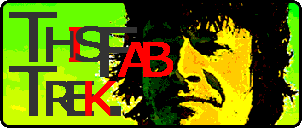


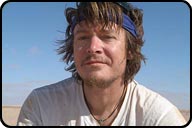
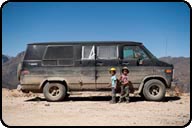


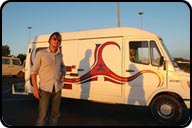
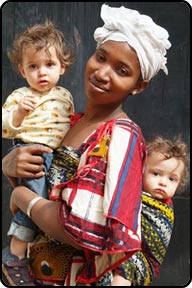
 contains Festival/Fiesta/Art photography.
contains Festival/Fiesta/Art photography.
